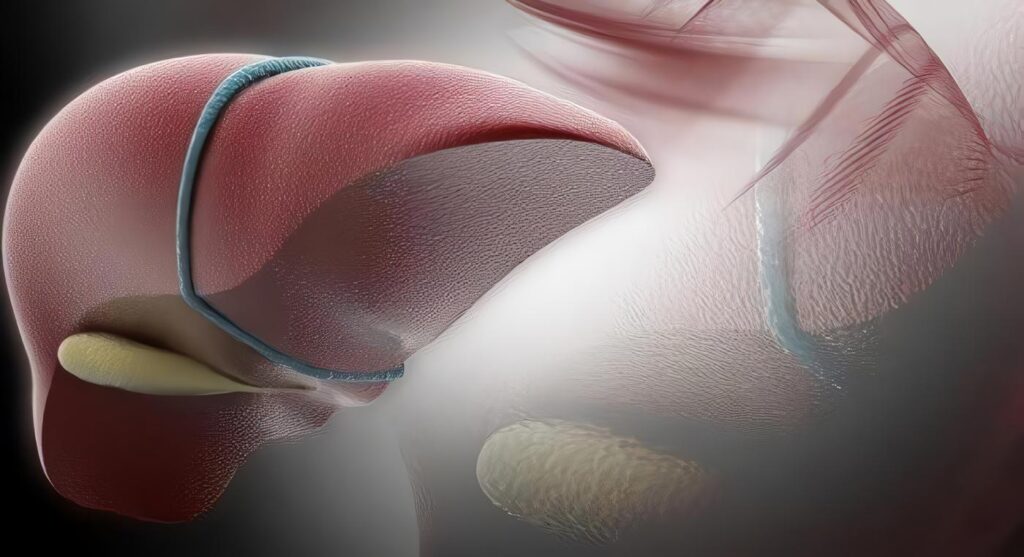Letter to the editor
Técnicas de trasplante hepático usadas en el manejo del carcinoma renal de células claras con trombos en la cava inferior que ascienden hasta el diafragma: serie de casos
Liver transplant techniques used in the management of clear renal cell carcinoma with thrombi in the inferior vena cava that ascend to the diaphragm: case series
Gaetano Ciancio1, Laura Niño Torres2
We congratulate Barrera et al1 for reporting their surgical experience with renal cell carcinoma (RCC) with tumor thrombus extending into the inferior vena cava (IVC). They achieved a very good outcome, and they had no intraoperative or postoperative mortality in their series. We are very pleased that other centers around the world are now using liver mobilization and liver transplant techniques for large renal tumors particularly with a vena cava thrombus. We believe that this is the largest series from Latin America with such good results.
some suggestions
We would like to make some suggestions and clarify some points. During the past 23 years at the University of Miami Miller School of Medicine and Jackson Memorial Hospital, we have used liver transplant techniques (conventional or piggyback style mobilization)2-4 when dealing with renal cell carcinoma (RCC) having caval involvement. Its use applies to any type of RCC, not just RCC clear cell.
All RCCs with extension into the IVC are hypervascular and associate with extensive collateral circulation. We recommended early ligation of the renal artery using the posterior approach. Once the renal artery is ligated, there is a decrease in blood loss with a corresponding collapse in the collateral circulation. Sometimes, there is even a decrease in size of the tumor thrombus5,6. This approach also eliminates the use of a transcatheter embolization of the renal artery before surgery.
It is important to clarify that the Cattell-Braasch maneuver for complete exposition of the retroperitoneum has been widely used in trauma and other procedures such as this one and is described to go from the biliary duct to the Tretiz ligament, therefore the Kocher maneuver is the fisrt step of the Cattell- Braasch procedure7 and it is a misconception to state: “Se procede con la maniobra de Cattell-Braasch y luego con la de Kocher, hasta lograr la exposición completa del tumor, de la vena cava infrarrenal y de las venas renales bilaterales”.
Transesophageal echocardiography (TEE)
Transesophageal echocardiography (TEE) provides real-time surveillance of the i) proximal extension of the tumor thrombus during vascular clamping of the IVC, ii) volume status of the patient, and iii) possibility of any pulmonary emboli of tumor thrombus occurring during the manipulation of the IVC8. TEE is also used in determining the presence of tumor thrombus emboli (TTE) to the pulmonary artery before surgery9 as well as the occurrence of TTE and/or blood emboli after the surgery.
We described a new classification for level III10 (retrohepatic and suprahepatic portion of the inferior vena cava, not extending into the atrium but above the diaphragm) tumor thrombus and the surgical approach for each of the different levels. This classification was not described by Neves et al.11 and should not be used as Neves IIIa, IIIb, IIIc and IIId.
Level IV RCC with tumor thrombus remains a surgical challenge.
Barrera et al1 described in the introduction that level IV “requieren inevitablemente, paro cardiaco y circulación extracorpórea,” but we reported our experience removing adherent12 and non-adherent13-15 Level IV (intra-atrial) tumor thrombus without a thoracoabdominal approach, median sternotomy, nor cardiopulmonary bypass.
We applaud Barrera et al1 in providing a clear description of their surgical technique and in their excellent results, and we hope that other centers will start using these organ transplant-based techniques to help these types of patients with a very complex and challenging pathology.
References
- 1. Barrera LM, Vergara FA, Duque MF, Suaza LR , Rivillas ND, Ramirez JA. Técnicas de transplante hepático usados en el manejo del carcinoma renal de células claras con trombos en la cava inferior que ascienden hasta el diafragma: serie de casos. Rev Colomb Cir. 2019;34:260-8.
- 2. Ciancio G, Hawke C, Soloway, M. The use of liver transplant techniques to aid in the surgical management of urological tumors. J Urol. 2000;164:655-72.
- 3. Ciancio G, Livingstone AS, Soloway M. Surgical management of renal cell carcinoma with thrombus in the inferior vena cava: The University of Miami experience in using liver transplant techniques. European Urology. 2007;51:988-95.
- 4. Ciancio G, González J, Shirodkar S, Angulo-Cuesta J, Soloway M. Liver transplantation techniques for the surgical management of renal cell carcinoma with tumor thrombus in the inferior vena cava: Step-by-Step description. European Urology. 2011;59:401-6.
- 5. Ciancio G, Vaidya A, Soloway M. Early ligation of the renal artery using posterior approach: A basic surgical concept re-enforced during resection of large hypervascular renal cell carcinoma with or without vena cava thrombus. Br J Urol International. 2003;92:488-9.
- 6. Ciancio G, Cerwinka W, Soloway M. En-block mobilization of the inferior vena cava and large hypervascular right renal tumors with or without inferior vein cava tumor thrombus: Posterior ligation of the renal artery. Intern J Urol. 2006;13:1144-6.
- 7. Mattox K, Moore E, Feliciano D. Trauma. New York: Mc Graw Hill. Seventh Edition. 2013; p. 520-521
Bibliographies
- 8. Fukazawa K, Gologorsky E, Naguit K, Pretto E, Salerno T, Arianayagam M, et al. Invasive renal cell carcinomas with inferior vena cava tumor thrombus: cardiac anesthesia in liver transplant settings. J Cardiothorac Vasc Anesth. 2014;28:640-6.
- 9. Serena G, Gonzalez J, Gaynor J, Salerno T, Verzaro R, Ciancio G. Pulmonary tumor embolization as early manifestation in patients with renal cell carcinoma and tumor thrombus: Perioperative management and outcomes. J Card Surg. 2019;34:1018-23.
- 10. Ciancio G, Vaidya A, Savoie M, Soloway M . Management of renal cell carcinoma with level III thrombus in the inferior vena cava. J Urol. 2002;168:1374-7.
- 11. Neves RJ, Zincke H. Surgical treatment of renal cell cancer with vena cava extension. Br J Urol. 1987;59:390-5.
- 12. Cerwicka WH, Ciancio G, Salerno TA, Soloway M. Renal cell cancer with invasive atrial tumor thrombus excised off-pump. Urology. 2005;66:1318-e9-11.
- 13. Ciancio G, Soloway M. Renal cell carcinoma with tumor thrombus extending above the diaphragm: avoiding cardiopulmonary bypass. Urology. 2005;66:266-70.
- 14. Ciancio G, Shirodkar S, Soloway M, Salerno T. Techniques for avoidance of sternotomy and cardiopulmonary bypass during resection of extensive renal cell carcinoma with vena caval tumor thrombus extension above the diaphragm. J Card Surgery. 2009;24:657-60.
- 15. Ciancio G, Shirodkar S, Soloway M, Livingstone A, Barron M, Salerno T. Renal carcinoma with supradiaphragmatic tumor thrombus: Avoiding sternotomy and cardiopulmonary bypass. Ann Thorac Surg. 2010;89:505-11.
Respectfully,
Gaetano Ciancio, MD
Professor of Surgery and Urology
Department of Surgery (Division of Transplantation) and Urology
Miami Transplant Institute
University of Miami Miller School of Medicine,
Jackson Memorial Hospital,
Miami, FloridaLaura Niño Torres, MD
General Surgery Resident (PGY4)
Universidad del Rosario
Observer at the Department of Surgery (Division of Transplantation)
Miami Transplant Institute
University of Miami Miller School of Medicine,
Jackson Memorial Hospital,
Miami, Florida
Autores
1 Gaetano Ciancio. Professor of Surgery and Urology, Department of Surgery (Division of Transplantation) and Urology Miami Transplant Institute; University of Miami Miller School of Medicine, Jackson Memorial Hospital, Miami, Florida
2 Laura Niño Torres. General Surgery Resident (PGY4), Universidad del Rosario Observer at the Department of Surgery (Division of Transplantation) Miami Transplant Institute, University of Miami Miller School of Medicine, Jackson Memorial Hospital, Miami, Florida







